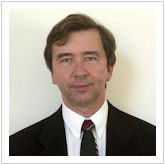On Wednesday 28th March 2012, The European Conservatives and Reformist Group with ECR Vice-Chairman Ryszard Legutko, ECR MEP Tomasz Poreba, and ECR MEP Ryszard Czarnecki hosted in Brussels, Belgium, EU a public hearing on "The Smolensk Plane Crash". The hearing was a public one.
1.
On the speakers' list was Kazimierz Nowaczyk who spoke on how the U.S. manufacturer of the collision-warning system, Universal Avionics Systems Corp., working with the National Transportation Safety Board, analyzed the flight data for the Russian crash investigation. However, neither the company nor the NTSB would comment on whether the readouts shows evidence of explosions, as Nowaczyk claims.
Source:
http://smolenskcrash.eu/news-25-university-of-akron-engineering-professor-raises-doubts-about-jet-crash-that-killed-poland39s-president.html
Following the path of thought laid out by Kazimierz Nowaczyk one must say that if there were any explosions on the "crash site" then they must have been earth-bound, not aerial ones. Moreover, the alleged explosions Mr Nowaczyk was talking about must have been directed against trees, not the aircraft itself. She had flown well over tree tops, claimed Mr Nowaczyk, yet the trees in the "path of the aircraft" are severely damaged, some cut, some blown off, some smashed, some even reduced to matchwood. Nothing short of an explosive device – or devices – could cause damage to the trees in the way and art we see on the photos taken on the "crash site". Then, there is no evidence of explosive device use on the airframe, state the Russian officials. These are very strong arguments in favor of the opinion that the explosions were poised against trees and against the debris which piled on the ground. Explosions must have occurred at ground level, or maybe several feet above the ground, but not higher than that. There is no evidence of explosions occurring in or around the airframe. However some precut, mashed or otherwise prepared debris might have been struck/hurled around by ground-level demolition charges.
2.
On the speakers' list was Wieslaw Binienda who spoke on the tree impact that supposedly precipitated the crash. It wouldn't have caused enough wing damage to down the plane, said Binienda, a well-regarded expert in fracture mechanics who heads the university's civil engineering department. Instead, Binienda's computer model shows the wing would have lopped off the tree top "like a knife." The collision would have caused relatively minor damage to the wing's leading edge – not enough to seriously impair its lift capability and flip the jet. "It's absolutely impossible that the wing sheared and then it crashed the way [government investigators] described," Binienda told The Plain Dealer in his first U.S. interview.
Source: aforementioned link.
Following the path of thought laid out by Wieslaw Binienda one must say that if there were any collisions with trees on the "crash site" then the aircraft must have flown through the trees, slowly loosing its speed, landing softly on its undercarriage. However, not the slightest evidence of the landing gear touching the ground was found. Moreover, the alleged plane "landed" on a strip of an impossibly short length comprising some 130 yards. We are made to believe that the 80-tonne jet airliner landed without touching the ground, yet somehow shattered to bits in what can be best described as a soft mud.
Therefore, we have two colliding views on the very same "crash site". Firstly, there are ample damaged trees and scattered debris where the plane allegedly was still flying undamaged, high in the air. Secondly, we have ample cut trees that could not have possibly caused any substantial damage to the aircraft even if it hit them head on, which it did not. Yet the very same jet airliner which did not hit a tree (or did it?) was shattered to tiny pieces as if it hit a mile-thick concrete wall.
We know that there was no concrete wall in Smolensk on the grounds of the Russian military Severny airfield. There was no explosion on board, specialists say. Consequently, all debris must have been prepared on Severny airfield in advance, and distributed there on a tiny (some 130×35 yards) clearing in the woods by some means, be it mechanical and/or chemical in nature (read: derricks, explosive devices). Of course if there was enough debris on the ground prepared well in advance then there was no need for a flight of an actual (i.e. real) aircraft. Most probably there was no aircraft in the air at all, no airliner of the type Tupolev Tu-154M, no Polish Government Delegation – just dirt, mud, a lot of debris laid out in advance, some live trees wired to be cut in a due moment, a few bombs or explosive cords attached to tree branches, a few mechanical means of cutting stubborn trees, a few devices capable of distributing debris – all staged to create an illusion of a "plane crash". In a word, there was no "crash site" at all, but a make-believe, an illusion of a "crash site", waiting to be unveiled to the shell-shocked bystanders in an orchestrated "sound and light" performance of a very grave kind.
We do not know what the fate of the Polish Government Delegation was.
What we do know is the Smolensk Illusion. It was quite well prepared, impressive, yet not undetectable. Scattered debris could not have been distributed by a plane crash but only by combined mechanical/explosive means. For a short time, there was a lot of smoke as well. The smoke was declared as "fog" regardless the contrary evidence of good visibility all around the restricted area where a temporary theatrical illusion unduly named "crash site" was staged and performed by many actors, probably some witted and many more unwitting ones.
Please note: this article is a follow-up to the fore-running entry (in Polish). Your comments in Polish are welcome. Comments in English certainly are.


No comments:
Post a Comment